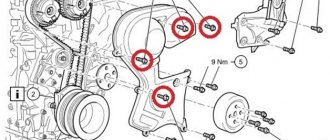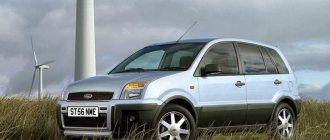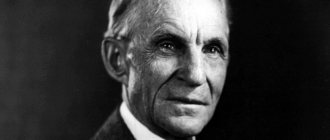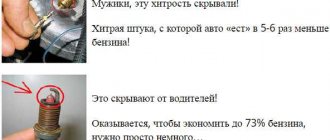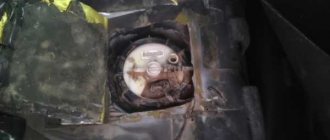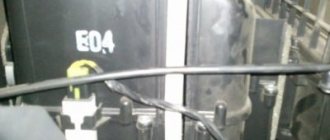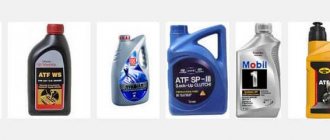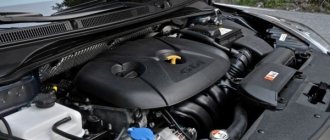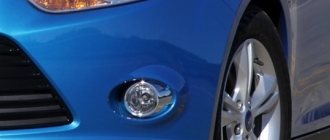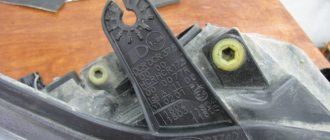Although the Ford brand has American roots, the second generation Ford Focus (the first and third ones too, by the way) is European down to the last bolt. Even the production of this model was only in Germany and Spain, and since 2005 also in Russia and China. For more than one year in a row, the Ford Focus 2 has been among the top five sales of new cars, and its popularity is no less popular on the secondary market. Many consider this car to be the optimal combination of price and quality, let's find out if this is so.
In 2008, the manufacturer restyled the model, during which the front part of the car changed (hood, fenders, optics, bumper), and the center console and instrument panel also changed. As a result, Focus 2 has become more modern and charismatic.
Body and equipment
Focus 2 was produced in the following bodies: hatchback (3 and 5 doors), sedan and station wagon. The most popular was the 5-door hatchback - an excellent city car. The space inside the cabin is sufficient for its class, rear passengers can easily find a comfortable position and, thanks to the design of the front seats, the legs do not rest against the driver’s back (it’s better not to carry basketball players). All body types have the same interior size, the only difference is in the luggage compartment.
The quality of plastic differs depending on the vehicle configuration. In basic versions it is hard and creaky, but in more expensive versions it is soft and there are correspondingly much fewer “crickets”. “Crickets” and mediocre sound insulation are one of the disadvantages of the model. This problem can be easily (if you have $500-800) corrected with the help of additional sound insulation, or maybe you will be lucky enough to buy a car that is already noise-free.
The disadvantages include the weak paintwork of the Ford Focus 2. The slightest damage to the paintwork can turn into an open source of corrosion, and it is not difficult to damage it. The rear fenders and the trunk lid in the area of the license plate illumination are especially susceptible to this “sore”. Corrosion can be found even on a 5-year-old, undamaged car, and this is a big minus for the manufacturer.
The basic configuration of the Ambiente is completely “sad” - only a 1.4 engine, an airbag only for the driver, power windows only in the front. Starting with the Comfort option, air conditioning, on-board computer, front passenger airbag, ABS, and full power accessories are added. But already in the Ghia and Titanium trim levels there are such “goodies” as: climate control, heated mirrors and windshield, good music, four airbags, light and rain sensors. The rain sensor, by the way, turned out to be very “buggy”, sometimes it rubs dry, sometimes it doesn’t turn on when it’s raining.
Technical characteristics, comparison of modifications
The second generation Ford Focus II looks much richer and more efficient than the first. First of all, the engineers expanded the wheelbase; it became longer than the Ford Focus by 5.0 cm.
In the basic configuration, wheels are 15, 16, 17 inches, which adds more space to passengers in the rear row of seats. The sloping roof overhead no longer creates an oppressive effect, as it did in the first generation Focus. Height increased by 2.5 cm.
What's included in the standard package:
- Airbags;
- Central locking;
- Immobilizer;
- Steering column adjustable in height and angle.
The Special Edition, White and Black, Titanium versions are additionally equipped with an air conditioning system, power accessories, and drive side mirrors.
Titanium is the maximum configuration, where in addition to the above, the interior is trimmed with leather, aluminum, and active and passive safety is improved.
For an additional fee, buyers can order an IVD dynamic stabilization system, zone climate control, bi-xenon, and parking sensors. And also, a multifunctional audio system with support for the “Multitouch” option.
Taking into account the characteristics and quality of the road surface in the CIS, the Russian manufacturer additionally equips the vehicles with engine compartment protection, reinforced disks, and thresholds.
Everything in the interior is carefully worked out, the joints and fits are perfect, there are no sharp edges, as was the case in the first generation. The volume of the glove box has increased to 12.0 liters, cup holders, lighting, and a compartment for papers are pre-installed.
As mentioned at the beginning of the article, the rear row of seats has become more spacious; three passengers will be quite comfortable. Useful luggage compartment space is 385 liters in the sedan and 475 liters. in a hatchback. If necessary, the rear row folds, increasing the volume to 1525 liters.
The steering column is adjustable in two ranges: height, tilt angle. Using the on-board computer, you can change the turning force. The driver has three modes to choose from: sport, standard, comfort.
Sport settings provide a tight ride and quick recovery. “Comfort” is adapted for urban areas, “Standard” is for universal use. You can find out which mode is activated from the information on the dashboard display.
The front and rear suspensions are effective, absorbing most of the bumps on the road as completely as possible. The front is a classic MacPherson strut, the rear is a multi-link beam.
In 2008, the Ford Focus II underwent a radical restyling. The main emphasis was placed on changing the exterior of the car. Only the roof remained intact; everything else was redone. The changes had a positive impact on dynamic indicators.
The model can be identified by the presence of multiple smooth lines in the exterior, the smoothness of the transition from the roof to the middle part, and the skirt.
Ford Focus 2 engines
1.4 Duratec (80 hp) - a frankly weak engine, intended only for leisurely movement, but the most economical - 7 liters. around the city is quite possible.
1.6 Duratec (100 hp), 1.6 Duratec Ti-VCT (115 hp) - the most common engine, allows you to operate the car in normal mode. An engine with variable valve timing Ti-VCT is more powerful and flexible, but problems with this mechanism are not solved cheaply (after 150,000 km, such problems are not uncommon; you will have to spend $250-300). The rated life of the timing belt is 160,000 km, but experts recommend not to tempt fate and change it, along with the rollers, every 100,000 km. Average consumption in the city is 10-11 liters.
1.8 Duratec (125 hp) - a more powerful engine, but also more problematic. The main problem is floating speed and stalls at idle, even the “officials” don’t really know what to do about it, they constantly suggest cleaning the throttle valve. A more budget-friendly and radical way is to drill a hole in the throttle valve with a diameter of 2-3 mm. Judging by the reviews on the forums, this solution to the problem helped many.
2.0 Duratec (145 hp) is the most “fun” engine in the lineup. 145 horses allow you to pamper yourself at traffic lights and overtake on the highway with your eyes open. True, these horses drink 14-15 liters in city mode. The same engine was installed on the Ford Mondeo. In the timing system, instead of a belt, there is a chain, and this saves $300-400 every 100,000 km. mileage, and this engine has a very long service life.
1.8 Duratorg (115 hp) - Ford's diesel engine turned out to be quite reliable and trouble-free in operation, even in severe frost there are no starting problems, and fuel consumption is only pleasing. Of course, all this is true only under the condition of “human” operation of the engine, so high-quality diagnostics of a diesel engine before purchase is mandatory. The secondary market often offers a 1.6 liter (90 and 109 hp) diesel engine, and quite rarely comes across a 2 liter (136 and 110 hp). All diesel engines are very sensitive to fuel quality.
List of works during maintenance 1 (mileage 20 thousand km.)
- Changing the engine oil and oil filter (also during all subsequent maintenance).
Oil specifications must comply with international standards: ACEA A5/B5, A1/B1; API SL/CF. Manufacturer approval: BMW Longlife-04, Ford WSS-M2C 917-A, GM Dexos 2, MB 229.51, VW 502.00, VW 505.00, VW 505.01.Recommended oil Castrol EDGE Professional OE oil. The catalog number of such a liter canister is 4673690060, and the price is about 660 rubles . 1.4 and 1.6 liter engines will need 4 liters. oils The original Ford Formula F 5W30 oil in a 5-liter canister has catalog number 15595E or 14E8BA, and costs about 1700-1800 rubles .
The oil filter for engines 1.6, 1.8, 2.0 has catalog number 1595247 and costs around 405 rubles .
- Replacing the cabin filter (during all maintenance).
The original catalog number is 1354953, and the cost is about 850 rubles . - Replacement of the air filter (during all maintenance).
The catalog number of the original is 1708877, and the cost is approximately 650 rubles .
Checks during maintenance 1 and all subsequent ones:
- accessory drive belt;
- air conditioning compressor drive belt;
- timing belt;
- crankcase ventilation system;
- hoses and connections of the cooling system;
- coolant;
- exhaust system;
- fuel lines and connections;
- covers for joints of different angular velocities;
- checking the technical condition of front suspension parts;
- checking the technical condition of rear suspension parts;
- tightening the threaded connections securing the chassis to the body;
- condition of tires and air pressure in them;
- wheel alignment angles;
- steering gear;
- power steering system;
- checking the free play (play) of the steering wheel;
- hydraulic brake pipelines and their connections;
- pads, discs and drums of wheel brake mechanisms;
- vacuum booster;
- parking brake;
- brake fluid;
- accumulator battery;
- spark plug;
- headlight adjustment;
- locks, hinges, hood latch, lubrication of body fittings;
- cleaning drainage holes.
Gearbox Ford Focus 2
Standard for the second Focus is a five-speed manual transmission. To avoid problems, it is necessary to monitor the condition of the axle shaft seals, since if you “poke” an oil leak, the loss of fifth gear is guaranteed. If second or third gear slips out when releasing the gas, the control cables need to be adjusted. Due to the lack of a synchronizer, there is a “sore” - a crunch when turning on and the reverse gear slipping (it’s useless to fight, you can put up with it). But shifting forward is a pleasure - clearly, with a short stroke, almost perfect.
The automatic machines on the Focus 2 were simple, and therefore reliable, maybe a little thoughtful. And so, if you deliberately do not “kill” the automatic transmission and change the oil regularly, then there will be no problems (except for even higher gasoline consumption).
Suspension
While driving the Ford Focus 2 you can enjoy the ride thanks to its excellent suspension and rigid body. Handling is excellent, the teeth do not chatter on potholes and uneven surfaces, if the suspension is in order, then a smooth ride without rocking is ensured. The suspension can safely be called comfortable.
Many owners consider wheel bearings to be the weak point of the chassis, which last an average of 70-80 thousand. km. (some had enough resource up to 150,000, it depends purely on operating conditions). The issue price is $100 with replacement, in the original. This is if you don’t contact an official dealer, who will charge you 2-3 times more, but use the Internet to buy spare parts, and a trusted service station for installation.
The suspension of the second focus is complex and multi-link, but quite reliable. With high-quality spare parts, the service life is 100,000 km. can be called average. Previously, stabilizer struts and bushings are usually returned (but this is typical for almost any car). You don’t have to worry about the rear suspension at all up to 200,000 km.
Engines Split Port
The 2.0 liter Split Port engine was originally installed on the Ford Escort; it appeared on this model in 1997. ICE Split Port - single-shaft, four-cylinder, 8-valve, equipped with a timing belt.
The real scourge of these power units is the weak fit of the valve seats in the cylinder head. The saddle falls off at the slightest overheat, as a rule, after the incident it is required:
- replacing the block head (at best, its expensive repair);
- replacing pistons.
If the saddle hits the cylinder hard, the liner is damaged, the connecting rod is bent, then major repairs are impossible - you have to bore the block. Another problem with this breakdown is that spare parts are not cheap, sometimes it is easier to buy a contract engine than to restore the power unit.
ICE has other “diseases”, but not so serious:
- the engine stalls on a cold start;
- Ignition modules are not durable.
Often, many car owners cannot determine what type of two-liter engine is installed in the car, and the internal combustion engine model does not fit into the registration certificate. There are two ways to determine:
- look at the engine power in the documents - for Split Port it is indicated as 110-111 hp. With.;
- open the hood and pay attention to the valve cover - for the Split Port it is aluminum, with shaped protrusions along the outer part.
Bottom line
The advantages of a used Ford Focus 2 include the fact that all of the above characteristics are offered on the secondary market at a fairly reasonable price. And after a few years of “using” the car, you are almost guaranteed to sell it at the purchase price (minus spare parts, but with a reasonable approach to buying a used car, these costs can be minimized).
When purchasing, special attention should be paid to diagnosing the chassis and searching for defects in the paintwork or areas of corrosion.
